Photographer Leta Harrison honors lived experience by capturing people as they are.
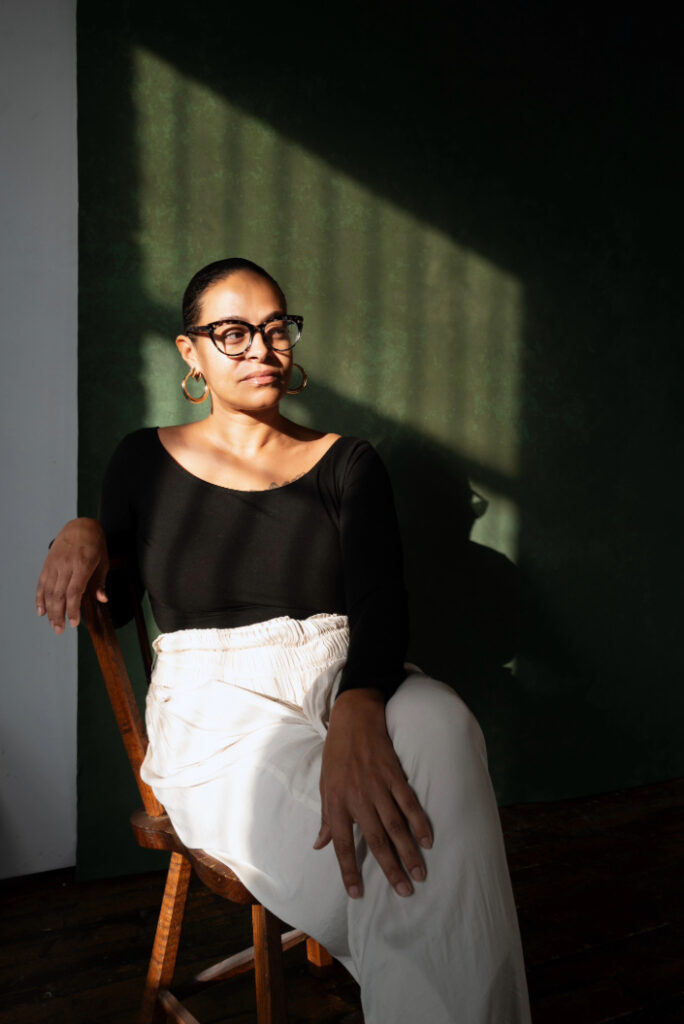
By L. Smith. Photos courtesy of Leta Harrison
The expression Leta Harrison conveys as she stands in front of the windows of the closed-off, bare, white-walled gallery of the Central Austin Public Library (APL) is simply, “This is remarkable, what’s happening.” She and her co-curators, Whitney Hamilton and Keyheira Keys from the arts alliance OF Color, execute their vision for the layout of their history-making Black Girls Don’t Wear Red Lipstick exhibition, which opened during Black History Month. Harrison, founder of LetaKathryn Photography and a legend on the rise, makes history as the first Black woman photographer to have an exhibit at the APL.
The Austin community likely first experienced Harrison’s work a few years ago when she photographed a field training with Blue Scorpion Protection. Her ability to capture motion and the intensity of the moments between the range instructors and the firearm owners garnered much attention and led many to become followers of her work. In 2023, admirers of Harrison’s photography had the opportunity to view her work again at the George Washington Carver Museum, where the initial pieces of her Black Girls Don’t Wear Red Lipstick exhibition showcased Black women in red lipstick being true to their identities and standing boldly in the authenticity of their culture—from a brilliant smile with gold-grill-framed teeth, to natural coily locs regally wrapped in a turban, to confidently making strides in an assimilated corporate red blazer and slacks.
It was clear then that Harrison has the gift of capturing the stunning essence of, in this case, her Black female subjects. She has a passion for portraying the realness of her subjects, and she ascribes movement, energy and process as contributors to a great shoot. “My process is very easy. I make sure to capture people quickly, and I have learned to be more intentional with my shots.” Harrison, a mother of two, attributes her children for teaching her “so much about patience, resilience, communication, structure and the power of vulnerability.” Her subjects can vouch that the traits at Harrison’s core allow her to make connections and to quickly put her subjects at ease. Dewi Smith, one of Harrison’s exhibit subjects contemplates Harrison’s rapid rapport building. “If it’s good, it doesn’t take much.”
Fast forward to February this year. Harrison continues to challenge an arguably little known, subtle beauty taboo. Her inspiration for this exhibit came from a moment while capturing Kam Franklin, lead vocalist for The Suffers, at an artist’s talk at the Carver. “[Kam] was talking about her sense of style—how people would tell her she needed to be more modest—and she referenced what she was experiencing as ‘Black girls don’t wear red lipstick.’” This moment solidified the need for the Black Girls Don’t Wear Red Lipstick project. With this current iteration, Harrison has become living Black history during the month revering Black history, vividly encapsulating the beauty of Black women boldly living their truths while confronting beauty norms.


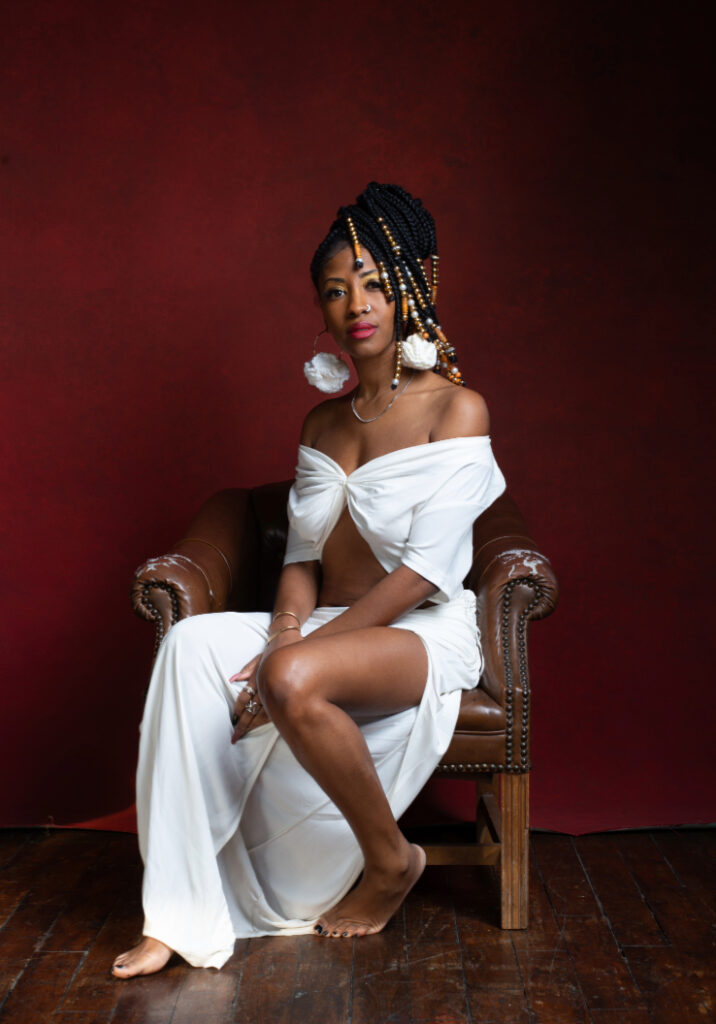
“It is bittersweet because we, Black people, are still becoming ‘the first’ to be in spaces that we should have already been invited to be in…More opportunities need to be present for photographers, especially Black women photographers.” Being a woman in photography offers challenges. “The fact that I am Black adds to some of those difficulties,” Harrison says. “But it has never stopped me from taking on the many opportunities that have come my way.” This drives her aspiration for LetaKathryn Photography, which is “to have the ability to give other people opportunities.”
By taking up space in the APL gallery as a Black female photographer, this Austin transplant by way of Washington, D.C., makes her own history and continues her family’s photography legacy in the 21st century. Her photography roots run deep. “My grandfather was a photojournalist,” she explains.
Black Girls Also Dream
Though she has photographed for Austin’s Afro Tech, which she regards as her most memorable photo shoot thus far, and has work published in Essence magazine, Leta Harrison remains humble. She deeply values her current exhibition and the subjects who trusted her with their images and their stories, yet she views herself as an emerging artist. “I am exactly where I am supposed to be. There will be evolution in my work as time evolves, and I continue to grow personally.” Her photographer’s dream is to shoot for TIME magazine.
Harrison’s relationship with art began in her childhood. She was an only child until age 6, born of a strict white mother from a small Pennsylvania town and an absent Jamaican immigrant father. Her art journey began thanks in large part to encouragement from her grandparents, with whom she spent many of her summers. “My grandmother and my aunt encouraged me to explore my creativity at a very young age. I can also remember teaching myself to draw by tracing my favorite storybook characters.”
Harrison can personally relate to the limitations and restrictions this current collection challenges, surviving sexual assault and “severe bullying” in middle school because of her “light” skin. “I spent a large part of my life staying modest and not celebrating myself,” Harrison reflects, and she admits that she feels most confident when she is capturing images of her subjects.
As someone who has experienced agonizing trauma and overcome being minimized, Harrison’s historic recognition is more than a celebration of her richly hued APL gallery exhibit. “[Black Girls Don’t Wear Red Lipstick] is a love letter to the boldness of Black women,” she proclaims. “As a Black woman, I was constantly told that I could not do or be something.” For Harrison, photography is a calling that provides assurance and motivation to keep building her dreams.

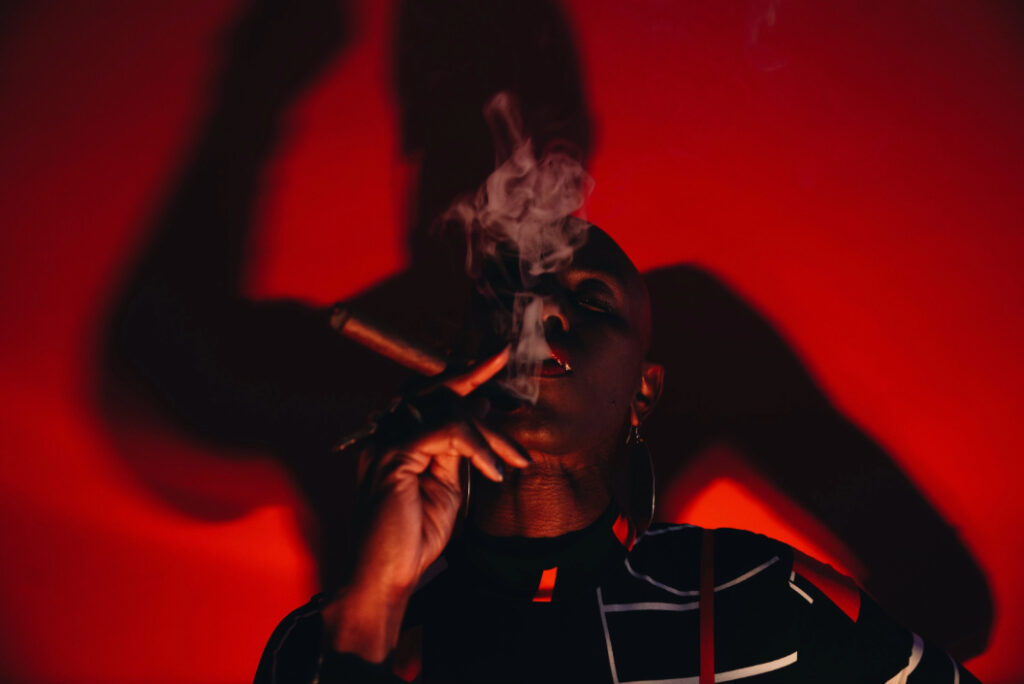
Although Harrison has long been aware that she wanted to create art, it wasn’t until 2017 that she realized the value of photography as art. She names and gives reverence to a few hiker friends who were also photographers: Josh Hecht, Austin Eigmy and David Reinserman. “I just became drawn to the imagery that came out of their cameras,” she explains. “So, in 2017, I purchased a camera and allowed myself to see what I could do.”
Since starting her photography journey, which includes wedding and documentary photography portraits, Harrison has come to enjoy the rarity of each photograph that she snaps. She views it as “capturing time,” as “capturing people as they are.” Her favorite time capture is a black-and-white photo of a street performer in Washington, D.C. The image, simply put, conveys grit. “It reminds me of home and the hard work that goes into building your dreams,” she reveals. “The moments that I capture may never happen again.”
Harrison, a continual student of her craft, cites fellow “time capturers,” Gordon Parks, Carrie Mae Weems and Vivian Maier as photographers she’d like to know more about. She remains curious about the vulnerability they exhibit in their work. Harrison also remains inquisitive about the creative process of surrealist artist Salvador Dalí. Harrison’s ability to capture the motion of her Black Girls Don’t Wear Red Lipstick subjects produces equally striking avant-garde imagery.
Harrison’s art is currently on exhibition at APL through April 21, 2024. Nicole Parker, APL exhibit coordinator, believes hosting this exhibit has the potential to pull in “people who won’t typically go to a museum or an art gallery because they don’t feel comfortable or just wouldn’t go [due to feeling intimidated]in unwelcoming spaces.”
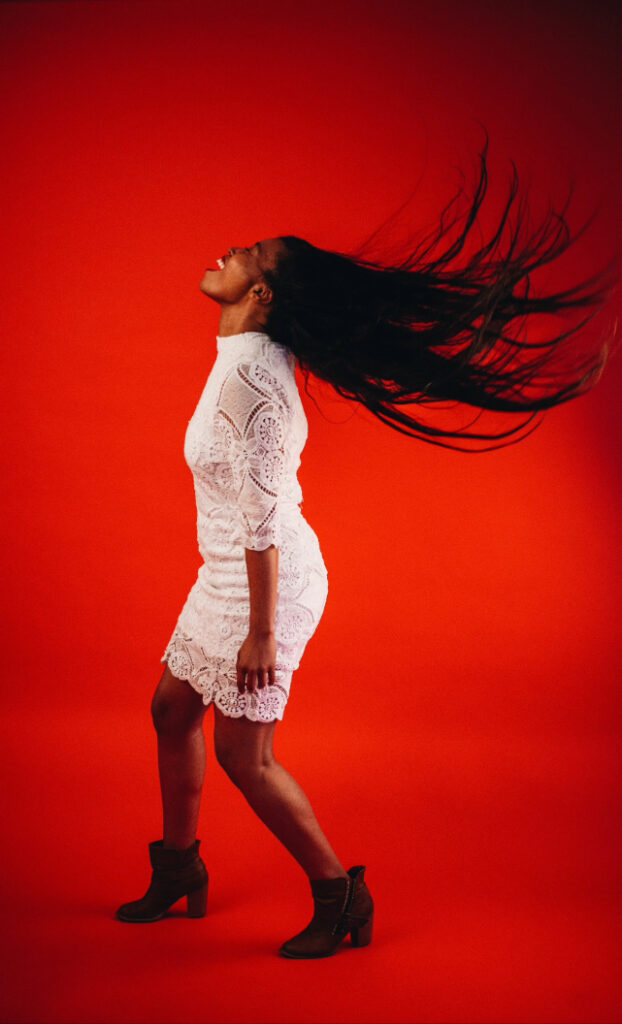
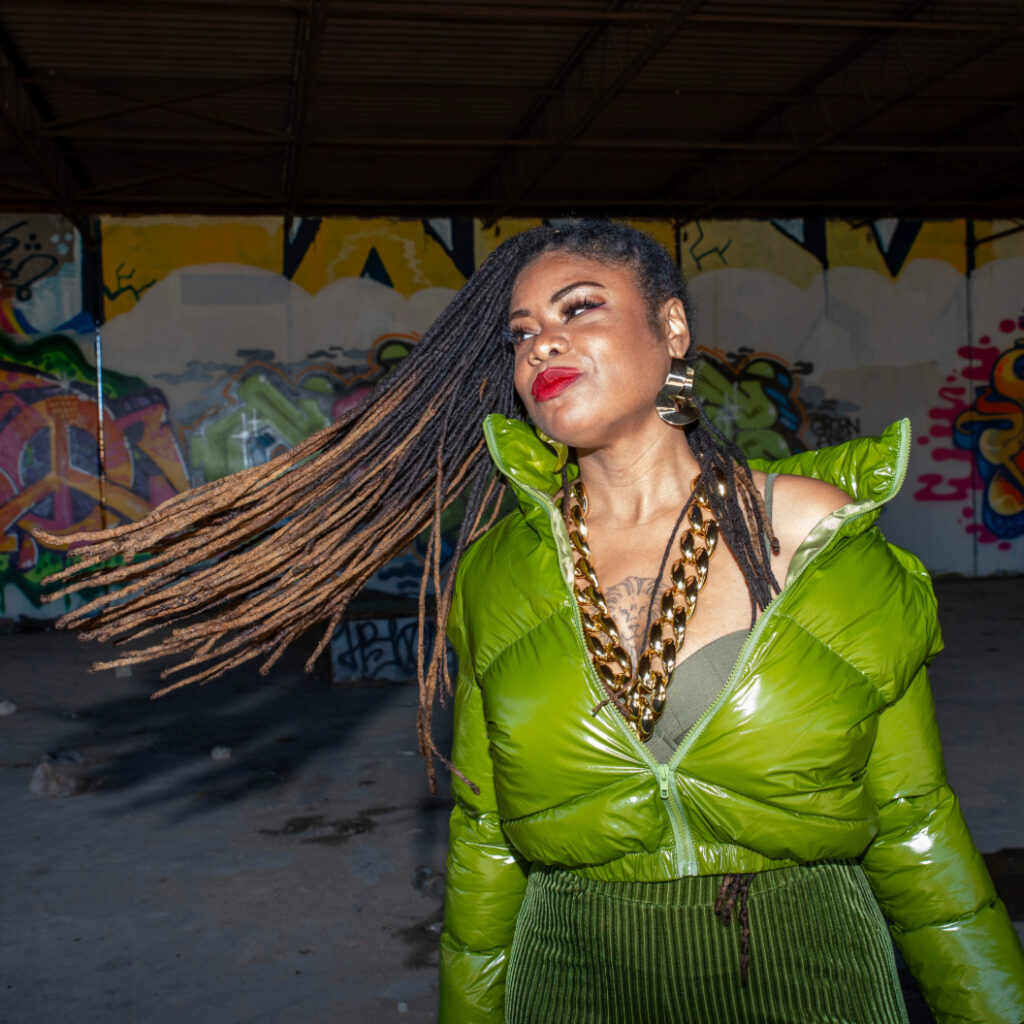
While also drawing inspiration from Houston’s art culture, Harrison specifies a few local individuals as being life-changing for her: John Chisholm, Ralph Blue, Jarrett Hendrix, Melissa Jones, Christine Papasco, Raasin McIntosh, Corlon Evans, Steven Hatchett, Christian Lee, Keyheira Keys and Whitney Hamilton. “These people either ignited my journey, carried me through my journey or elevated my journey.”
Harrison thanks all of her supporters, and while she cannot control the narrative others have of her, she would like to be remembered as “fearless, resilient, kind, compassionate and talented.”
On the takeaway from Harrison’s groundbreaking, norm-challenging exhibit, Harrison says, “I want [women]to feel empowered. I want them to understand that despite what they are being told, like this narrative of [they]can’t do anything—you can absolutely do whatever you want. And for the men, I want them to also support these powerful women because sometimes that can be a very difficult role. Having that support for these powerful women is key.”

